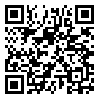Volume 16, Issue 1 (Journal of Soil and Plant Interactions 2025)
2025, 16(1): 89-102 |
Back to browse issues page
1- Department of Arid Land and Desert Management, Faculty of Natural Resources and Desert Studies, Yazd University, Yazd, Iran , ramazani.phd@gmail.com
2- Department of Environmental Sciences, Faculty of Natural Resources, Yazd University, Yazd, Iran
3- Department of Arid Land and Desert Management, Faculty of Natural Resources and Desert Studies, Yazd University, Yazd, Iran
4- Department of Horticulture, Faculty of Agriculture, University of Birjand, Birjand, Iran
2- Department of Environmental Sciences, Faculty of Natural Resources, Yazd University, Yazd, Iran
3- Department of Arid Land and Desert Management, Faculty of Natural Resources and Desert Studies, Yazd University, Yazd, Iran
4- Department of Horticulture, Faculty of Agriculture, University of Birjand, Birjand, Iran
Abstract: (618 Views)
Background and Objective: Biological stimulants have been considered to increase the efficiency of phytoremediation of heavy elements. The present study was conducted with the aim of evaluating the effect of the combined use of citric acid and plant growth promoting rhizobacterium (Bacillus cereus) on the plant-remediation ability of Salsola imbericata in cadmium-contaminated soils.
Methods: To carry out this research, a factorial experiment within a completely randomized design including cadmium with three levels (control, 30 and 60 mg/kg soil), seed inoculation with Bacillus cereus and citric acid with two levels (0 and 1 g/L) was considered in three replications. At the end of the study, shoot dry weight, root dry weight, stem height, dry biomass index, nutrient concentration, chlorophyll, proline and anthocyanin, and the amount of lead accumulation in the plant were measured.
Results: With the increase of cadmium concentration, the plant dry biomass, the amount of chlorophyll and the iron concentration in the plant decreased by 56, 53 and 35%, respectively, while the cadmium concentration, and proline and anthocyanin contents in the plant increased by 75, 71 and 41%, respectively. The use of citric acid and inoculation with plant growth promoting rhizobacterium improved the growth conditions of the plant, so that the combined use of these two at a concentration of 30 mg/kg cadmium increased biomass, chlorophyll and iron concentration in the plant by 43, 56 and 29%, respectively. The combined use of bacterium and citric acid also caused a 58% increase in root cadmium accumulation. The amount of cadmium in the aerial parts of the plant was undetectable.
Conclusion: Therefore, it was concluded that Salsola imbericata is a suitable plant for cadmium phytoextraction and the use of citric acid and Bacillus cereus can increase its ability for phytoextraction of cadmium.
Type of Study: Research |
Subject:
Plant growth under stressful conditions
Received: 2025/01/17 | Accepted: 2025/06/18 | Published: 2024/03/29
Received: 2025/01/17 | Accepted: 2025/06/18 | Published: 2024/03/29
Send email to the article author
| Rights and permissions | |
 |
This work is licensed under a Creative Commons Attribution-NonCommercial 4.0 International License. |









